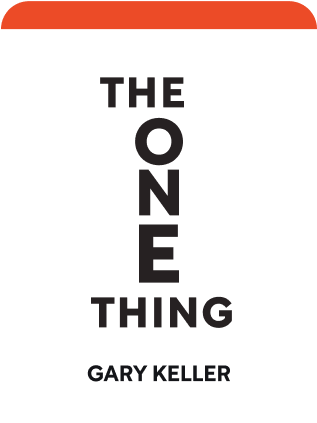

This article is an excerpt from the Shortform book guide to "The One Thing" by Gary Keller. Shortform has the world's best summaries and analyses of books you should be reading.
Like this article? Sign up for a free trial here .
Did you know that striving to achieve a balanced life can get in the way of success? What’s a better way to live?
A balanced life—one in which no area of life is neglected—is a myth. The notion that we should try to live a balanced life is a relatively new one. This way of living can keep you from making total commitments, which can keep you from succeeding at anything. Striving for counterbalance is a better way to live.
Read more to learn the truth about a balanced life.
Why a Balanced Life Can Hinder Success
A balanced life in which no area of life—for instance, work, family, or health—is neglected is a myth. Trying to maintain balance will keep you from achieving extraordinary success because success requires allowing some things to remain unaddressed, at least temporarily, so you can focus on what’s most important.
The goal of achieving balance in our lives is relatively recent. For most of human history, work and life were synonymous. You had to work all the time, hunting or raising crops and livestock, in order to live. With the rise of the industrial age, people began working for others, who then controlled much of their time. Unions and labor laws sought to mitigate work demands on time.
The work-life balance concept emerged in the 1980s, when a critical mass of women entered the workforce and had to meet the demands of both work and home life. In the 1990s, balance became important for men too. The rise of technology that erased work-life boundaries added to the craving for a balanced life.
Counterbalancing
The problem is that balancing all areas of your life at once keeps you from making an extraordinary commitment to anything. Yet the extremes are where exceptional achievement occurs. We instinctively know this, but don’t know how to manage our lives while pursuing the extraordinary. We swing back and forth between working too long and neglecting our personal life, and neglecting work to take care of family matters. Either way, we end up feeling we don’t “have a life.”
Instead of trying to do everything at once or swinging between extremes, we need to counterbalance, which is what ballet dancers do. A ballerina may look like she’s balancing, but she’s really counterbalancing or making constant adjustments with her toes and ankles create the effect she wants.
When you counterbalance, you focus on your One Thing at work or at home, and shift to another area only when you need to. Like a ballerina, you remain aware of what’s happening and make adjustments as necessary one at a time.
How Counterbalancing Works
The question isn’t whether you allow aspects of your life to be out of balance while you focus on the most important thing in a particular area—it’s for how long: a short period or a long one.
At work, go long—accept that achieving extraordinary results will require extraordinary focus on One Thing for long periods. This means allowing other work tasks to go undone for long periods, with only occasional counterbalancing or shifting focus to address the most pressing ones.
In your personal life, go short. The key is to be aware of personal and family needs and constantly counterbalance or switch your focus to address them. You can’t neglect your family, friends, and personal interests for long without causing irreparable damage. Shift back and forth quickly between personal priorities to ensure you’re leaving nothing unattended for long.
In your work, some things necessarily will fall by the wayside; in your personal life, you can’t let important things languish.
In Suzanne’s Diary for Nicholas, author James Patterson offers a work-life metaphor: It’s like juggling five balls representing work, family, health, friends, and integrity. Work is a rubber ball—if you drop it, it will bounce—but the others are glass, which will shatter or be damaged if you’re careless with them. So you can afford to drop some balls at work, but not in your personal life.
A Counterbalanced Life
To get the most important things done at work and at home, think of prioritizing in both places rather than balancing one against the other.
At work, be clear about your most important priority so you can get it done in order to focus on your priorities outside of work. At home, understand your priorities there so you can address them and go back to work.
Stop striving for a balanced life, and start living a counterbalanced life. Let the right things take precedence, and tackle the rest when you can.

———End of Preview———
Like what you just read? Read the rest of the world's best book summary and analysis of Gary Keller's "The One Thing" at Shortform .
Here's what you'll find in our full The One Thing summary :
- Why focusing daily on one thing, rather than many, is the key to success
- How success is like dominos
- The six common myths about success






